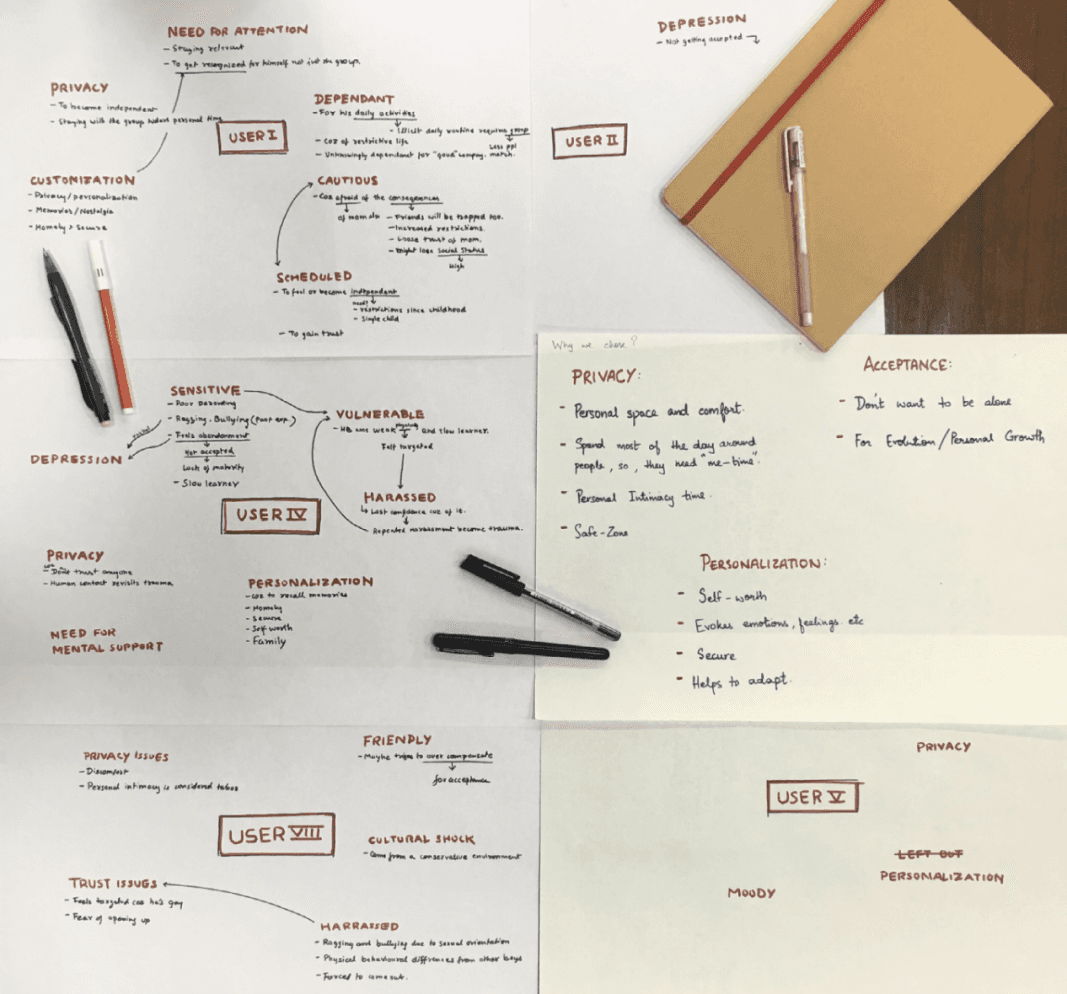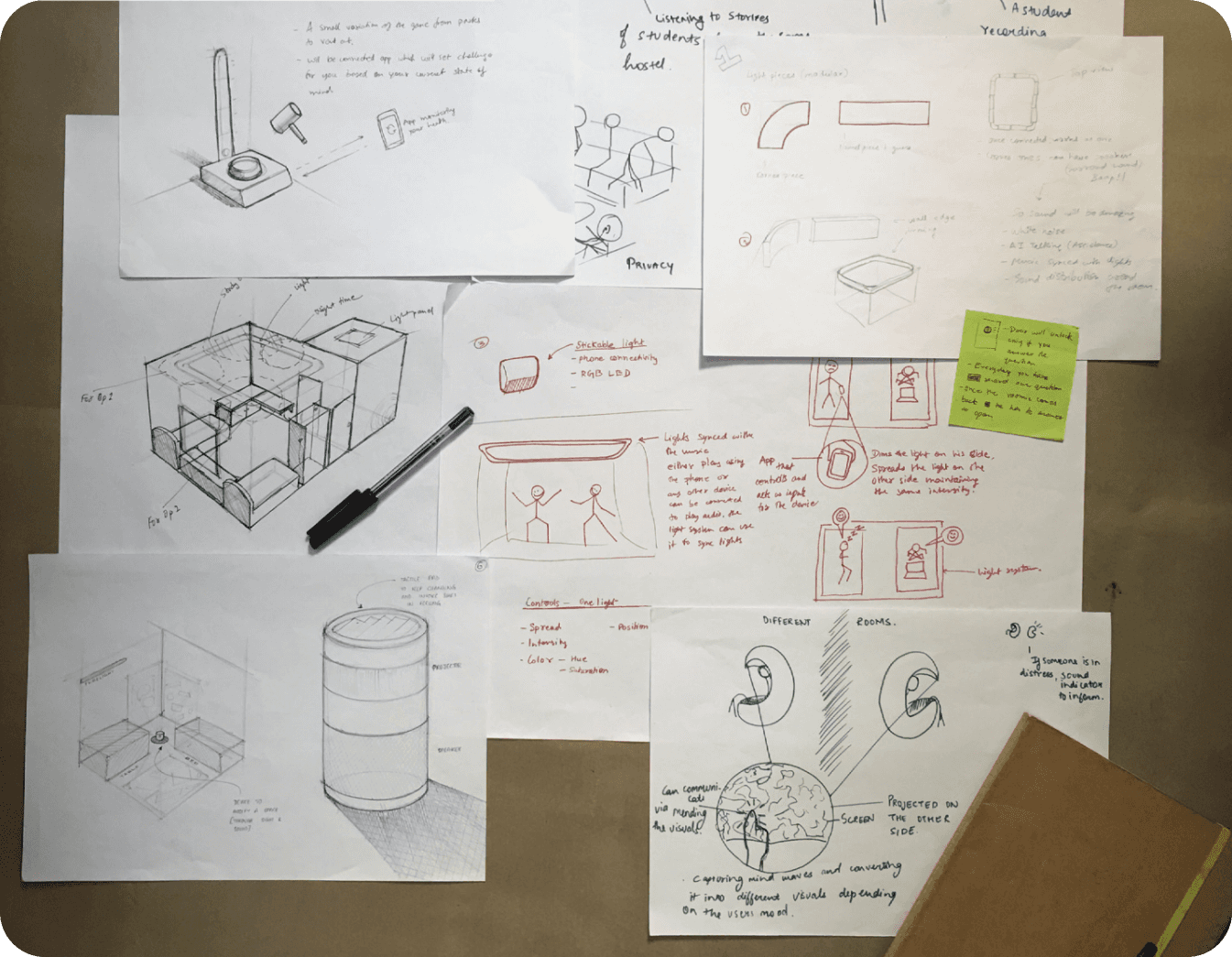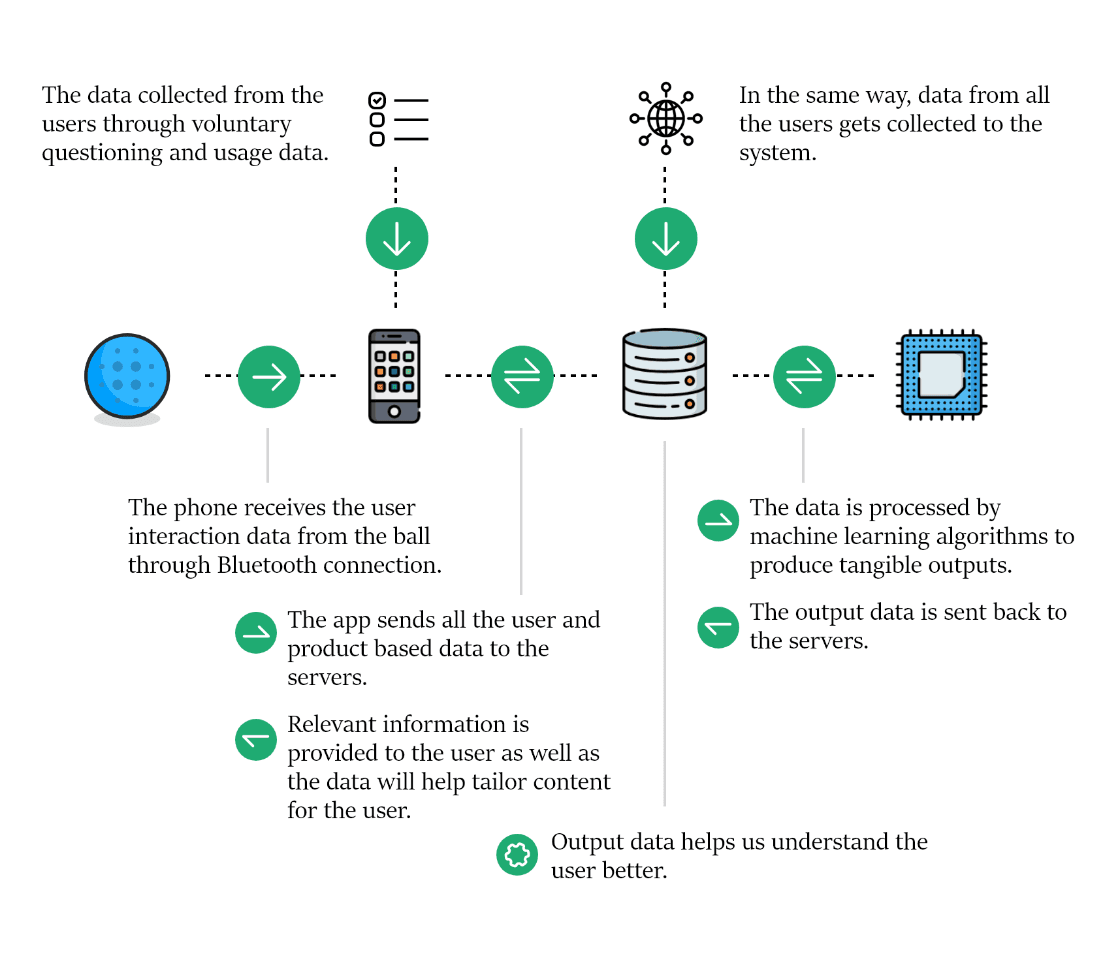Halo
Foundational product development exercise
Other contributors
Harshith Vuppala, Sachita Nandi, Tanvi Patel
Preface
Why this project?
Foremost, the initial idea seeded while sharing with each other our own experiences of hostel life. We had faced many mental and emotional difficulties all along. After going through few research publications, we were sure why we were doing this.
Introduction
Mental health is a state of complete physical, mental and social well being. Mentally healthy people are having some unique characteristics like, ability to understand self weakness and strengths, in touch with reality, good self esteem and self acceptance, ability to form affectionate relationships, ability to cope with daily life stresses and frustrations, ability to accept responsibility for own decisions feelings and actions and respect for this quality in others, and so on. A clear sense of these aspects are really important for an individual who has started a new journey of evolution as an student and living in hostel away from previous dynamics of living.
The Crisis
“The Nation as a whole has one of the world’s highest youth suicide rates.” According to a 2012 Lancet Report.
A study published in the Asian Journal of Psychiatry reported that, 53% of students living in hostels suffer from either a moderate or severe form of depression. 6% had suicidal thoughts and tendencies. And 30% felt extreme loneliness.
The positive implications of hostel life is well known, but the negatives are not acknowledged often. Commonly found negative impacts of hostel life: Influences (Drugs), Peer Pressure, Stress, Ragging / Harassment / Abuse, Isolation / Abandonment feeling, Cult Formation / Involvement, Mentally weak / Unstable, Loneliness / Helplessness.
Research Methods
Field Research
To better understand the context of the problem, we conducted personal interviews with around 40 hostel students across, 5 different campuses including CEPT, NID, IIT, and UID (Ahmedabad).
Identifying the extreme users
Based on the research data, we plotted out the extreme users to better categorize and understand the problem in detail. The categorization included, activity level, financial status, cultural backgrounds, etc.
Metaphor Elicitation
Metaphor Elicitation is a research method that was used to invoke conscious and subconscious feelings in the user through the selection of random images.
Research Game
We created a research game to understand the active and latent preferences of the user in the specified hostel scenarios. The user had to choose any five Room cards from the stack and then match the character cards relating to the situation accordingly. They had to give reasons for their choices and create a story by arranging in the desired sequence.
It helped bring out the user’s dormant mood presets and helped decode any apparent influences. Connecting these with the metaphor elicitation images, we believe we found useful insights about the users. And users talk about their needs and desires, evoking the past and visualizing the future which they would not have done otherwise.
Data Synthesis
Data Synthesis
After a thorough repetitive revision of all the data and the observations, a recurring set of pain points appeared. It was observed that “venting out” their emotions played a very important role in maintaining mental stability. Students needed a safe dependable interactive support system where they can vent out their emotions and achieve emotional balance.
Outcome
Intervention Goal
Creating safe dependability to gain emotional control.
Approach
Providing a therapeutic support system to help vent out emotions through interactive productive spaces.
Exploring Ideas
Workshop
In order to gain first-hand wild ideas to work on, we conducted a workshop between 10 randomly selected individuals. This helped set the foundation of the ideas we wanted to work on and helped give direction to what we wanted to achieve.
Concepts
After developing these concepts further, we ended up with defined clusters consisting of ideas that supported our insights. The clusters included ideas—like modified lights that provided a change in atmosphere/ambiance, creating new ways of interaction between rooms helping to find like-minded people, improving communication between roommates through various mediums, providing virtual systems to aid students, and creating interactive spaces with varying purposes.
Direction 1: Enhancing spaces to improve ambience, boost interactivity and connect people.
Direction 2: Products to help connect like minded people, act as companions.
Direction 3: System/products to help build strong bonds between people through interactive activity/shared responsibility.
Direction 4: Products that fulfill the need for physical intimacy and support.
Final Product: Halo
Inspired by the traditional stress ball, Halo is an interactive device that aims to seamlessly integrate itself into the lives of the users. A standalone product, its functions can be enhanced with an interactive interconnected space.
Overview of how the product works
Micro Interactions
We researched on how we can use colors, patterns, movement and sound to positively impact the users moods. We defined how the ball responds to the user's inputs in various scenarios. However, this needs much more research that we couldn't do due to lack of Infrastructure, time and budget.
Full Interaction / Experience Map
There are two major ways of using the product, with the recreation room and as an standalone object. Below we explain these 2 scenarios.
1. With the Recreational Room
2. Standalone Device
How will this system work
This is the overview of how the whole system would work. The system would help make better tailored experiences for the users. As well as the big data can be used to improve and update the existing products and provide ground work and help envision the future products.
Inside the Ball
This is the overview of how the whole system would work. The system would help make better tailored experiences for the users. As well as the big data can be used to improve and update the existing products and provide ground work and help envision the future products.
Testing
Limited by financial constraints at the time, we could only afford to create a rudimentary prototype to test the concept. As a result, numerous features had to be described rather than experienced firsthand. Despite this limitation, we received overwhelmingly positive feedback from users.
After Thoughts
After more than two years, this project remains one of my favorites. Reflecting on it today, there are numerous aspects I would approach differently. However, at the time, it was quite ambitious. This project played a pivotal role in solidifying my passion for Interaction Design and Research. It's intriguing to contemplate how much more captivating it could have been if we had the chance to further develop it.




















